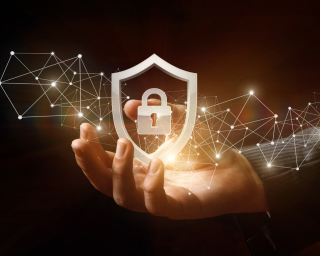Overview
Below you will find multiple requirements The New York State Board of Elections takes to ensure complete Election security. These include identity confirmation, machine security, pre-election audit, post election audit, and voting machine testing.
Identity Confirmation
When registering to vote, the Board of Elections checks the identity of the voter before Election Day, through the voter’s provided DMV number (driver’s license number or non-driver ID number), or the last four digits of their social security number.
If the voter does not have a DMV or social security number, they may use a valid photo ID, a current utility bill, bank statement, paycheck, government check or some other government document that shows their name and address. They can also submit a copy of one of those types of ID with their voter registration form.
If the Board is unable to verify a voter’s identity before Election Day, they will be asked for ID when voting for the first time.
Machine Testing
The New York State Board of Elections requires that before any voting system may be eligible to be purchased in New York State, it must be certified. Systems must meet the requirements of NYS Election Law, Section 6209 of Subtitle V of Title 9 of the Official Compilation of Codes, Rules and Regulations of the State of New York, and the federal 2005 Voluntary Voting System Guidelines (VVSG), Volume 1.
View all voting machine testing reports and recordings of in person demonstrations.
Machine Security
New York State Election Law § 7–202 describes the requirements of voting machines in New York State. These requirements are intended to ensure the security of election equipment and verifiability of cast votes.
Notable measures include:
- Providing a ‘‘protective counter’’ which records the number of times the machine or system has been operated since it was built and a ‘‘public counter’’ which records the number of persons who have voted on the machine at each separate election;
- Mandating machines have a lock or locks, or other device or devices, the use of which, immediately after the polls are closed or the operation of the machine or system for such election is completed, will absolutely secure the voting or registering mechanism and prevent the recording of additional votes;
- Retaining all paper ballots cast or produce and retain a voter verified permanent paper record which shall be presented to the voter from behind a window or other device before the ballot is cast, in a manner intended and designed to protect the privacy of the voter;
- And prohibiting any device or functionality potentially capable of externally transmitting or receiving data via the internet or via radio waves or via other wireless means.
Pre Election Audit
Before use, the State Board of Elections tests every voting machine of a type and every ballot counting machine to ensure that each such machine functions properly before such machines may be used in any election in this state.
Additionally, at least annually, County Boards of Elections test each machine. Tests include verification of the authenticity and integrity of the resident vote tabulation programming in open, encrypted, compiled, assembled, or any other form, by comparison of such resident vote tabulation programming with the programming which was in the machine was approved for use in this state. And the recording of at least eight hundred votes on each such voting machine and a sufficient number of votes on each such ballot counting machine, by a method which may be mechanical or electronic, to determine if such machine accurately records such votes.
Post Election Audit
According to NYS Election Law § 9–211, within fifteen days after each general or special election, within thirteen days after every primary election, and within seven days after every village election conducted by the Board of Elections, the Board of Elections or a bipartisan committee appointed by such Board shall audit the voter verifiable audit records from three percent of voting machines or systems within the jurisdiction of such Board.
Such audits may be performed manually or via the use of any automated tool authorized for such use by the State Board of Elections which is independent from the voting system it is being used to audit.
Voting machines or systems shall be selected for audit through a random, manual process.
At least five days prior to the time fixed for such selection process, the Board of Elections shall send notice by first class mail to each candidate, political party and independent body entitled to have had watchers present at the polls in any election district in such Board’s jurisdiction. Such notice shall state the time and place fixed for such random selection process. The audit shall be conducted in the same manner, to the extent applicable, as a canvass of paper ballots. Each candidate, political party or independent body entitled to appoint watchers to attend at a polling place shall be entitled to appoint such number of watchers to observe the audit.
The audit tallies for each voting machine or system are compared to the tallies recorded by such voting machine or system, and a report of the comparison is filed in the office of the State Board of Elections.
If a voting machine or system is found to have failed to record votes in a manner indicating an operational failure, the board of canvassers shall use the voter verifiable audit records to determine the votes cast on such machine or system, provided such records were not also impaired by the operational failure of the voting machine or system.

